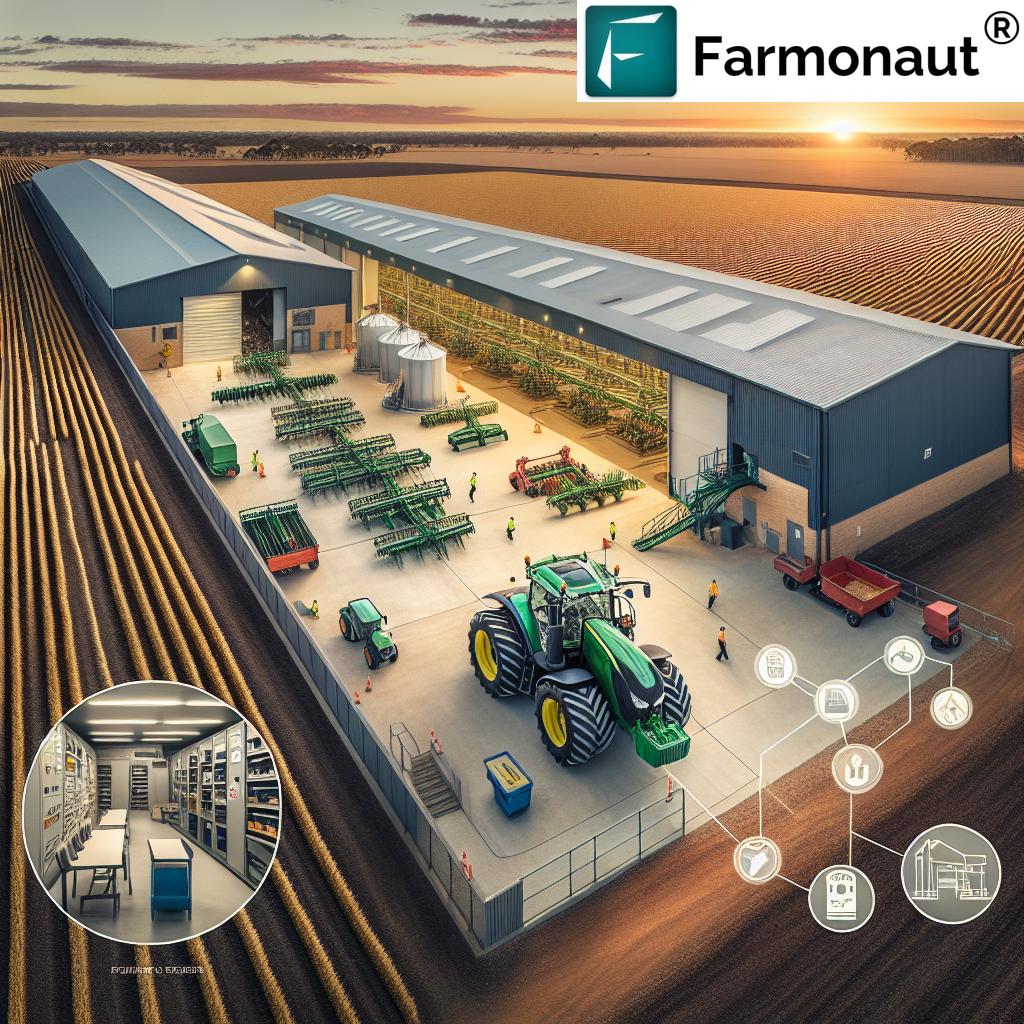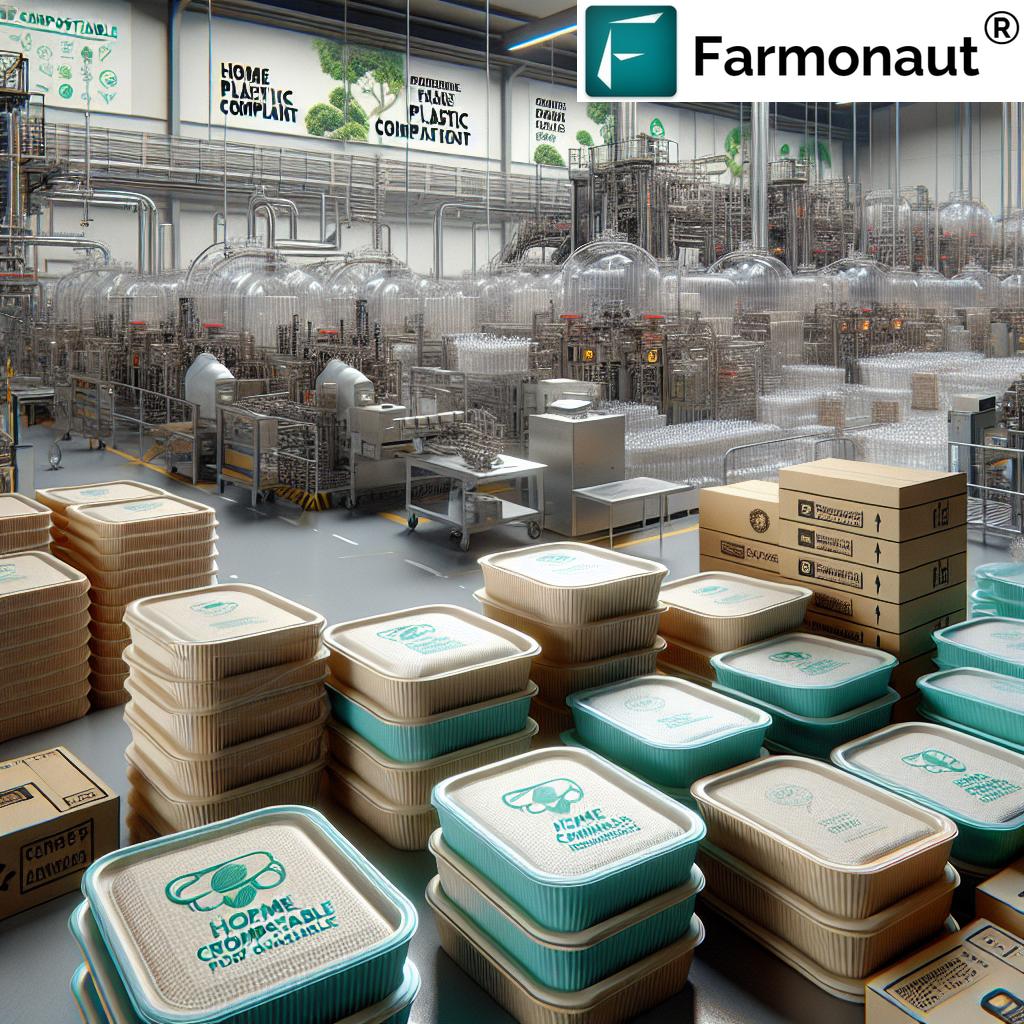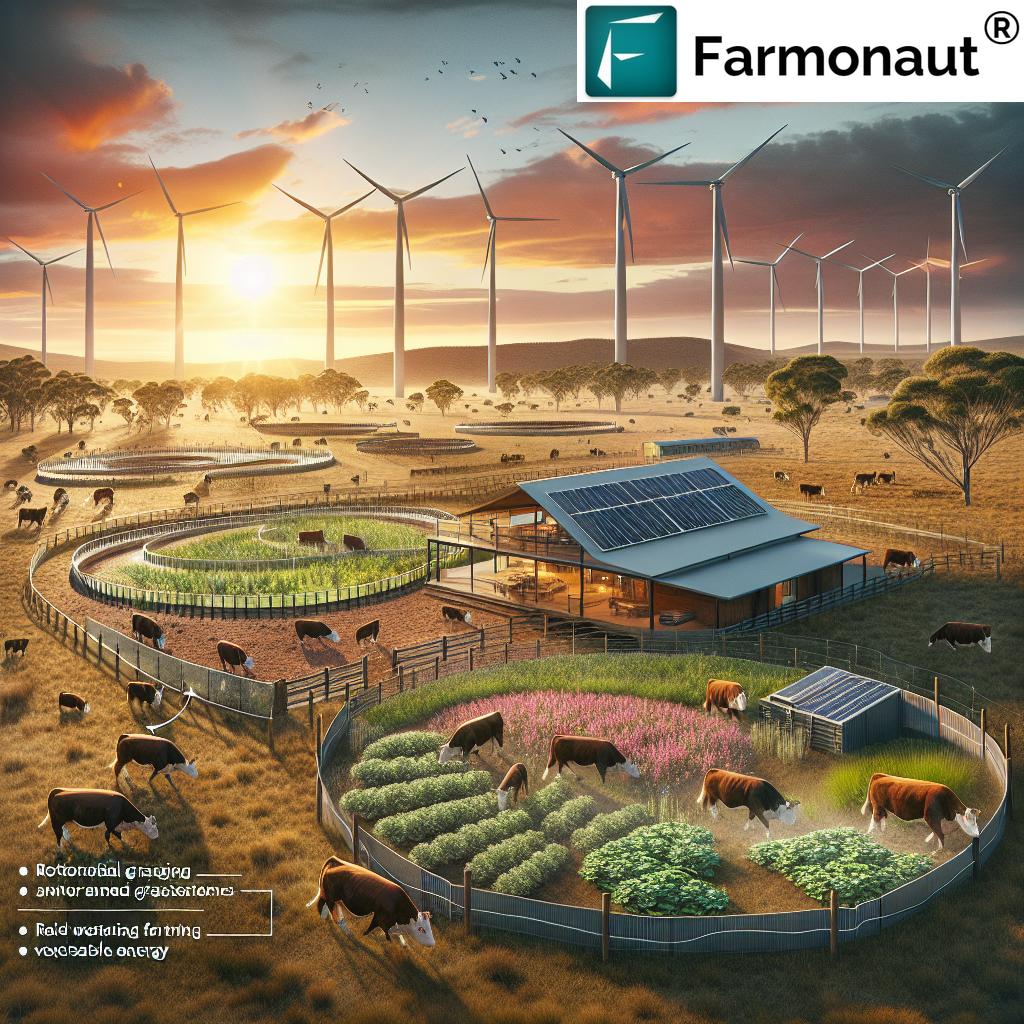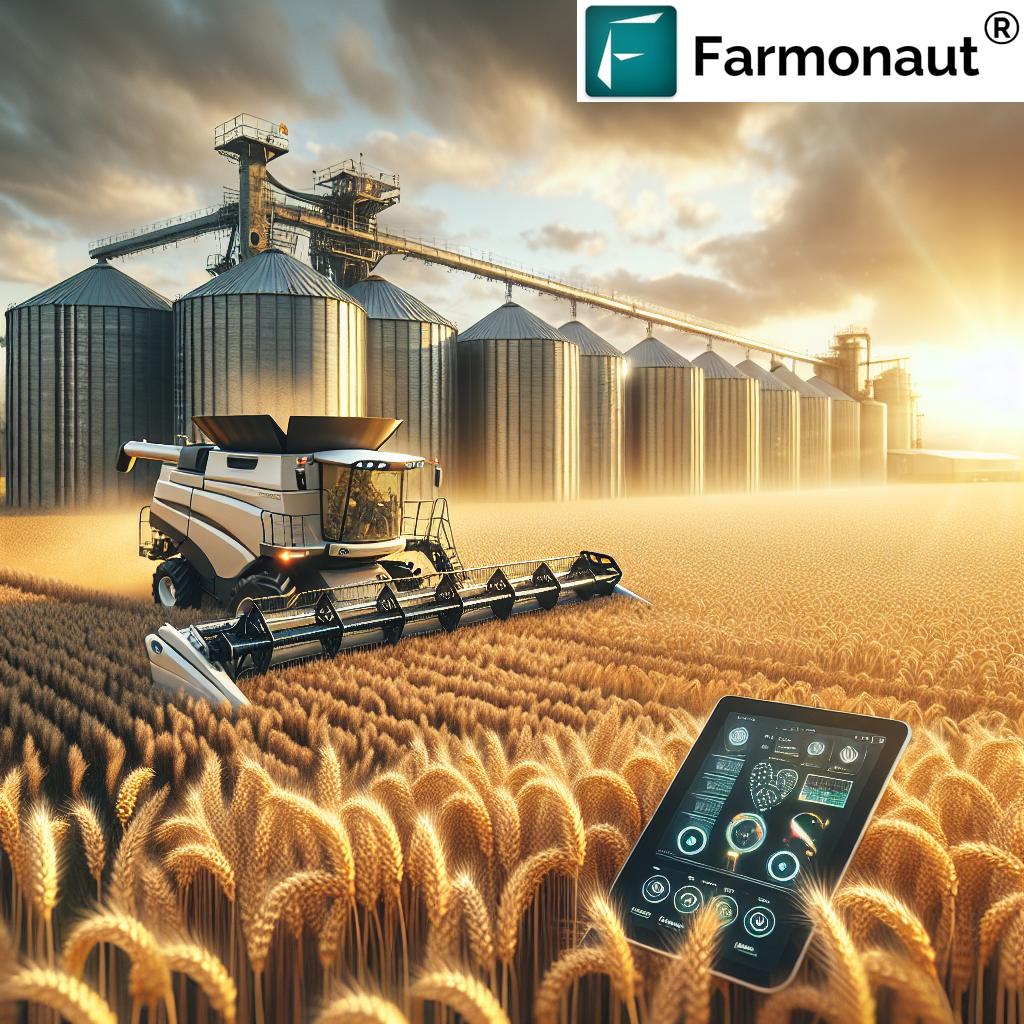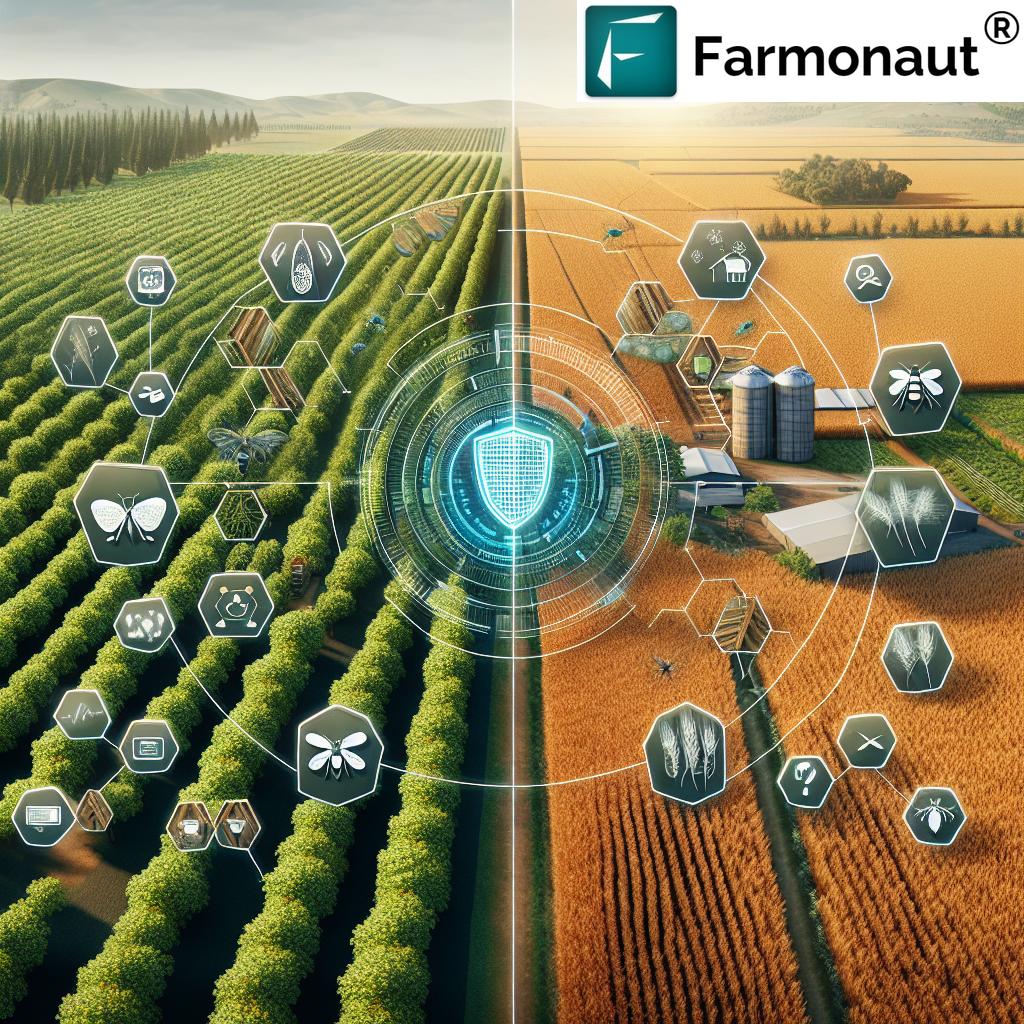Revolutionizing Australian Grain Industry: Sustainable Practices and Innovation for Profitable Farming
“Australian grain industry innovations have the potential to increase farm productivity by up to 25% through sustainable practices.”

In the vast expanses of Australia’s agricultural landscape, a revolution is quietly unfolding. We, as stewards of the land and pioneers in agricultural innovation, are witnessing a transformative era in the Australian grain industry. This blog post delves into the heart of sustainable agriculture practices and grain industry innovation, exploring how these advancements are reshaping our approach to profitable farming.
At the core of this revolution lies a critical review of competition policy, a cornerstone for fostering a fair and innovative agricultural environment. As we navigate through the complexities of Australian farming technology and agtech solutions for growers, we’ll uncover how these innovations are not just changing the way we farm, but are fundamentally altering the grain market dynamics and boosting farm productivity strategies.
The Pillars of Sustainable Agriculture in Australia
Sustainable agriculture practices are no longer just buzzwords; they’re the foundation of modern farming. In Australia, we’re seeing a significant shift towards methods that not only increase yield but also preserve our precious natural resources. Let’s explore some key practices:
- Precision Agriculture: Utilizing advanced technologies like GPS-guided machinery and drone surveillance to optimize resource use.
- Conservation Tillage: Reducing soil disturbance to maintain soil health and reduce erosion.
- Crop Rotation: Enhancing soil fertility and breaking pest cycles naturally.
- Water Management: Implementing efficient irrigation systems to conserve water in our drought-prone regions.
These practices not only contribute to environmental sustainability but also play a crucial role in enhancing the profitability of Australian farms. By reducing input costs and improving yield quality, sustainable practices are proving to be a win-win for both farmers and the environment.
Grain Industry Innovation: A New Frontier
Innovation in the grain industry is not just about new machinery or crop varieties; it’s about reimagining the entire farming process. Australian farming technology is at the forefront of this revolution, introducing solutions that were once the stuff of science fiction:
- AI-Powered Crop Monitoring: Using artificial intelligence to predict crop health and yield.
- Blockchain for Traceability: Ensuring transparency and trust in the grain supply chain.
- IoT Sensors: Providing real-time data on soil conditions, weather, and crop growth.
- Automated Machinery: Reducing labor costs and increasing efficiency in planting and harvesting.
These innovations are not just enhancing productivity; they’re reshaping the entire landscape of grain farming in Australia. By embracing these technologies, we’re seeing a significant boost in farm productivity strategies, allowing our growers to compete on a global scale.
Explore cutting-edge farming solutions with Farmonaut’s web application and mobile apps:
Agricultural Competition Policy: Leveling the Playing Field
A robust and fair agricultural competition policy is crucial for the growth and sustainability of the Australian grain industry. We recognize that effective policies can create an environment where innovation thrives and farmers can compete equitably. Key aspects of a comprehensive competition policy include:
- Market Access: Ensuring fair access to both domestic and international markets for all growers.
- Price Transparency: Implementing systems to provide clear, real-time pricing information.
- Anti-Trust Measures: Preventing monopolistic practices that could disadvantage smaller growers.
- Innovation Incentives: Providing support and incentives for the adoption of new technologies and sustainable practices.
By fostering a competitive environment, we can drive innovation, improve efficiency, and ultimately enhance the profitability of Australian grain farms.

Grain Market Dynamics: Adapting to Global Challenges
The Australian grain market is not isolated; it’s part of a complex global ecosystem. Understanding and adapting to these dynamics is crucial for our growers’ success. Some key factors influencing our grain market include:
- Global Supply and Demand: Fluctuations in international production and consumption patterns.
- Currency Exchange Rates: Impacting export competitiveness and import costs.
- Trade Policies: International agreements and tariffs affecting market access.
- Climate Variability: Unpredictable weather patterns influencing crop yields and quality.
By staying attuned to these dynamics and leveraging innovative technologies, Australian growers can better position themselves in the global market, enhancing their competitiveness and profitability.
“Effective competition policies in Australian agriculture could lead to a 15% boost in grain market dynamics and farmer profitability.”
Agricultural Infrastructure Development: The Backbone of Growth
A robust agricultural infrastructure is vital for the sustainable growth of the Australian grain industry. We’re focusing on several key areas:
- Sustainable Road Funding for Agriculture: Improving rural road networks to facilitate efficient transport of grain.
- Grain Logistics Optimization: Enhancing storage facilities and transportation systems to reduce post-harvest losses.
- Digital Infrastructure: Expanding high-speed internet access in rural areas to support precision agriculture technologies.
- Research Facilities: Investing in state-of-the-art research centers to drive innovation in crop science and farming techniques.
These infrastructure developments are not just about physical structures; they’re about creating a supportive ecosystem that enables our grain industry to thrive in an increasingly competitive global market.
Agtech Solutions for Growers: Empowering the Farm of the Future
The integration of agtech solutions is revolutionizing how we approach grain farming in Australia. These technologies are not just futuristic concepts; they’re practical tools that are already making a significant impact:
- Satellite-Based Crop Monitoring: Utilizing remote sensing to assess crop health and predict yields accurately.
- AI-Driven Decision Support Systems: Providing data-driven insights for optimal farm management.
- Precision Application Technologies: Enabling targeted use of inputs like fertilizers and pesticides.
- Automated Irrigation Systems: Optimizing water use based on real-time soil moisture data.
These agtech solutions are not just improving efficiency; they’re fundamentally changing how we approach farming, making it more precise, sustainable, and profitable.
Discover how Farmonaut’s advanced satellite technology can transform your farming practices. Explore our API for seamless integration and check out our API Developer Docs for detailed information.
Sustainable Road Funding for Agriculture: Paving the Way for Progress
The importance of a well-maintained rural road network cannot be overstated in the context of agricultural development. We’re advocating for:
- Long-Term Funding Models: Ensuring consistent investment in rural road infrastructure.
- Smart Road Technologies: Implementing IoT-based systems for real-time monitoring of road conditions.
- Community Engagement: Involving local farming communities in road planning and maintenance decisions.
- Environmental Considerations: Developing road systems that minimize ecological impact while maximizing efficiency.
By improving our rural road infrastructure, we’re not just facilitating the transport of grain; we’re connecting our farms to markets more efficiently, reducing costs, and improving the overall competitiveness of Australian grain in the global market.
Grain Logistics Optimization: Streamlining the Supply Chain
Efficient grain logistics are crucial for maintaining the quality of our produce and reducing costs. We’re focusing on several key areas for optimization:
- Advanced Storage Solutions: Implementing temperature and humidity-controlled silos to preserve grain quality.
- Blockchain-Based Tracking: Ensuring transparency and traceability throughout the supply chain.
- Intermodal Transportation: Integrating rail, road, and sea transport for efficient movement of grain.
- Predictive Analytics: Using data to forecast demand and optimize storage and transportation.
By streamlining our grain logistics, we’re not only reducing waste and costs but also enhancing the reputation of Australian grain for reliability and quality in international markets.
The Role of Grower Participation in Shaping Industry Future
The success of these initiatives hinges on active grower participation. We believe that farmers are not just beneficiaries of these changes but key drivers of innovation. Here’s how growers can get involved:
- Policy Engagement: Participating in industry forums and providing input on agricultural policies.
- Technology Adoption: Embracing and providing feedback on new farming technologies.
- Collaborative Research: Partnering with research institutions for on-farm trials and studies.
- Knowledge Sharing: Engaging in farmer-to-farmer learning networks to spread best practices.
By actively participating in these areas, growers can ensure that the future of the Australian grain industry aligns with their needs and aspirations.
Sustainability Framework for Australian Grain Industry
Developing a comprehensive sustainability framework is crucial for the long-term viability of our grain industry. This framework encompasses:
- Environmental Stewardship: Implementing practices that conserve soil, water, and biodiversity.
- Economic Resilience: Ensuring profitability through efficient resource use and market adaptability.
- Social Responsibility: Supporting rural communities and promoting ethical labor practices.
- Innovation and Learning: Continuously improving practices through research and knowledge sharing.
By adhering to this framework, we can ensure that our grain industry not only survives but thrives in the face of global challenges.
The Future of Australian Grain: A Vision of Sustainable Prosperity
As we look to the future, we envision an Australian grain industry that is:
- Technologically Advanced: Leveraging cutting-edge technologies to maximize efficiency and yield.
- Environmentally Sustainable: Leading the world in eco-friendly farming practices.
- Economically Resilient: Able to withstand market fluctuations and climate challenges.
- Globally Competitive: Recognized worldwide for the quality and sustainability of our grain.
This vision is not just aspirational; it’s achievable through the concerted efforts of all stakeholders in the industry.
Comparative Analysis: Australian Grain Industry Sustainability Metrics
| Metric | Traditional Farming | Precision Agriculture | Regenerative Farming |
|---|---|---|---|
| Water Usage (ML/hectare) | 5.5 | 4.2 | 3.8 |
| Soil Health Index (0-100) | 65 | 78 | 85 |
| Carbon Footprint (CO2e/tonne) | 0.6 | 0.45 | 0.3 |
| Yield (tonnes/hectare) | 2.5 | 3.2 | 3.0 |
| Profitability Index (0-100) | 70 | 85 | 82 |
This table illustrates the potential benefits of innovative farming practices in the Australian grain industry. It’s clear that precision agriculture and regenerative farming offer significant improvements in sustainability metrics compared to traditional methods.
Conclusion: Embracing Change for a Sustainable Future
The Australian grain industry stands at a pivotal moment. The challenges we face are significant, but so are the opportunities. By embracing sustainable agriculture practices, leveraging innovative technologies, and fostering a competitive yet collaborative environment, we can ensure the long-term prosperity of our grain industry.
As we move forward, let’s remember that the future of Australian grain farming is in our hands. It’s up to us to cultivate not just crops, but a legacy of innovation, sustainability, and prosperity that will benefit generations to come.
FAQ Section
Q: How can Australian grain farmers adopt sustainable practices without compromising profitability?
A: Farmers can adopt precision agriculture techniques, invest in water-efficient irrigation systems, and implement soil conservation practices. These methods often lead to reduced input costs and improved yields, enhancing profitability in the long run.
Q: What role does technology play in the future of Australian grain farming?
A: Technology is crucial for the future of grain farming. From AI-powered crop monitoring to automated machinery, technology helps improve efficiency, reduce resource use, and increase yields, making farming more sustainable and profitable.
Q: How can the Australian grain industry remain competitive in the global market?
A: To remain competitive, the industry should focus on producing high-quality, sustainably grown grain, invest in efficient logistics and infrastructure, and leverage technology for precision farming and supply chain optimization.
Q: What are the key challenges facing the Australian grain industry today?
A: Key challenges include climate variability, water scarcity, increasing production costs, and global market competition. Addressing these requires a combination of innovative farming practices, supportive policies, and technological advancements.
Q: How can small-scale grain farmers benefit from the industry’s technological advancements?
A: Small-scale farmers can benefit by adopting scalable technologies like satellite-based crop monitoring, participating in knowledge-sharing networks, and utilizing government support programs for technology adoption.
Explore Farmonaut’s innovative solutions for sustainable and profitable farming. Visit our web application to get started!










